ALFRED SISLEY (1839-1899)
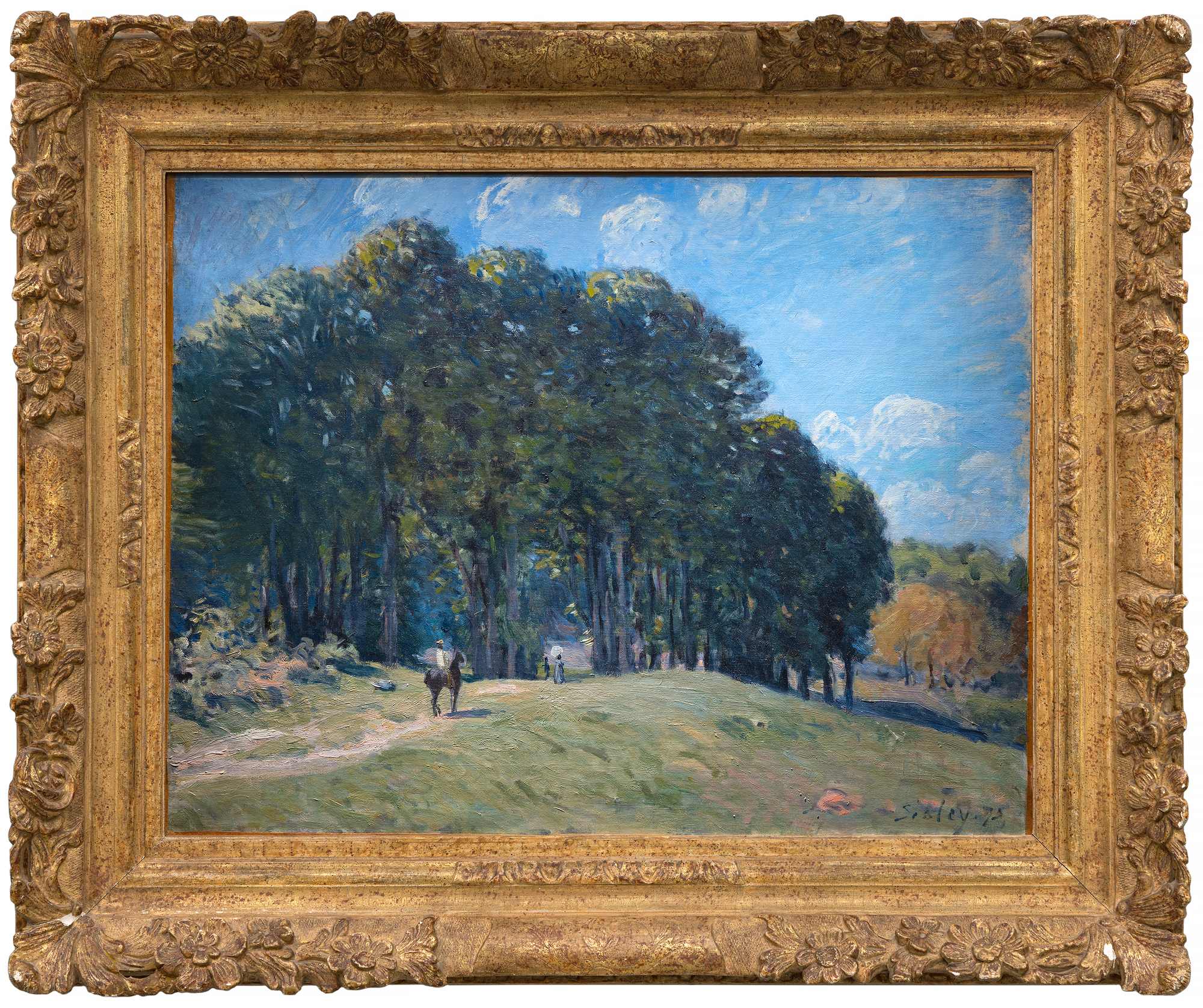
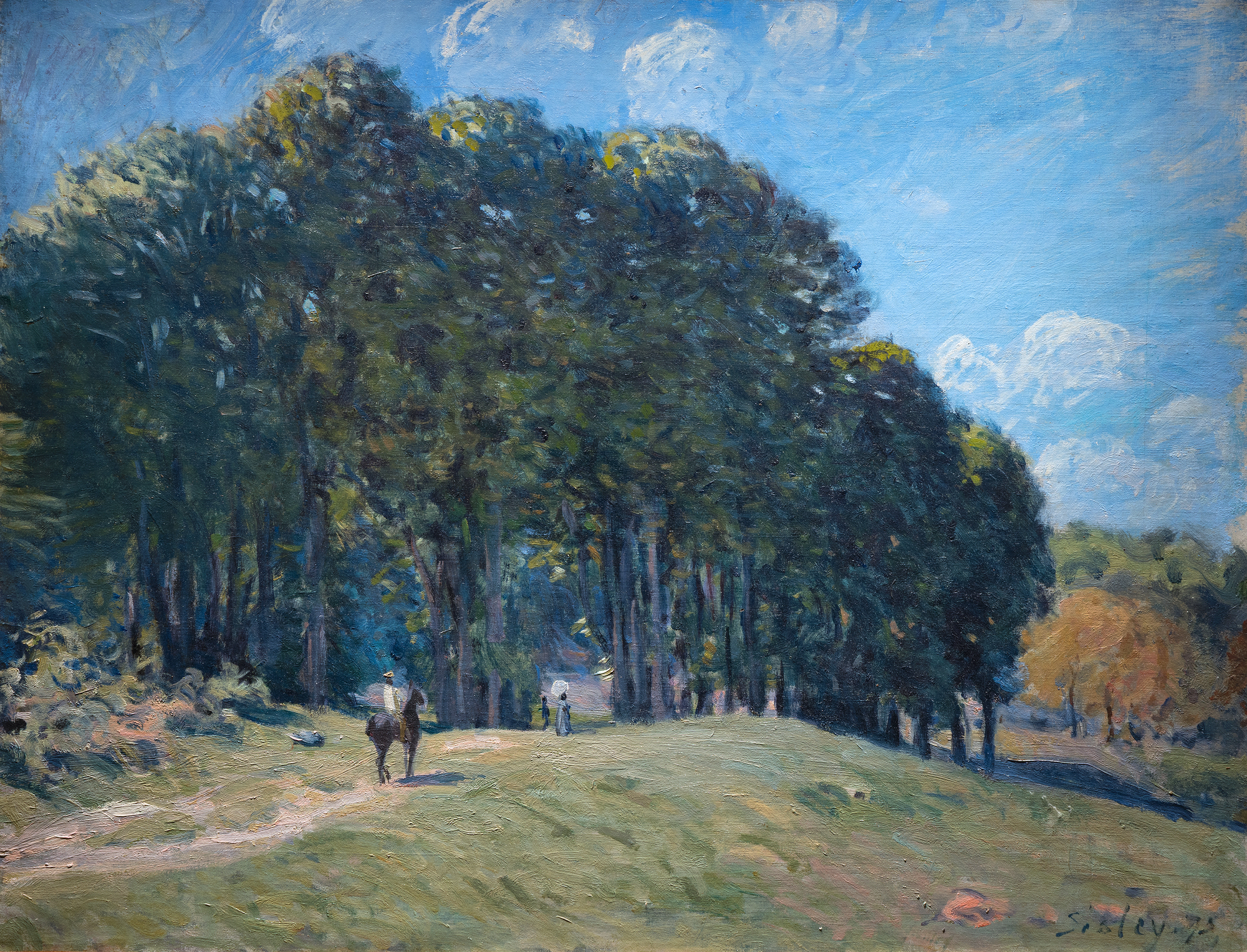
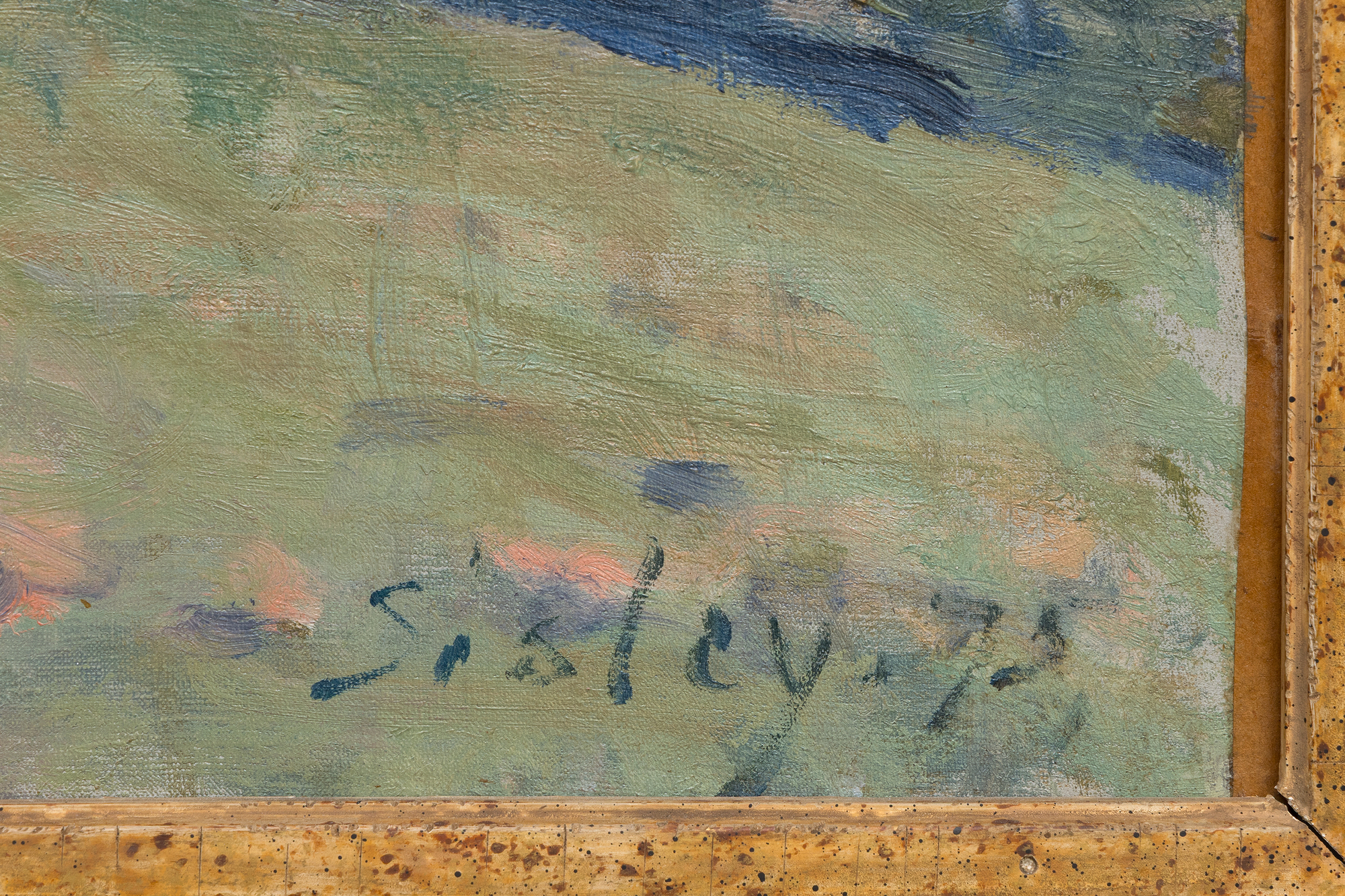
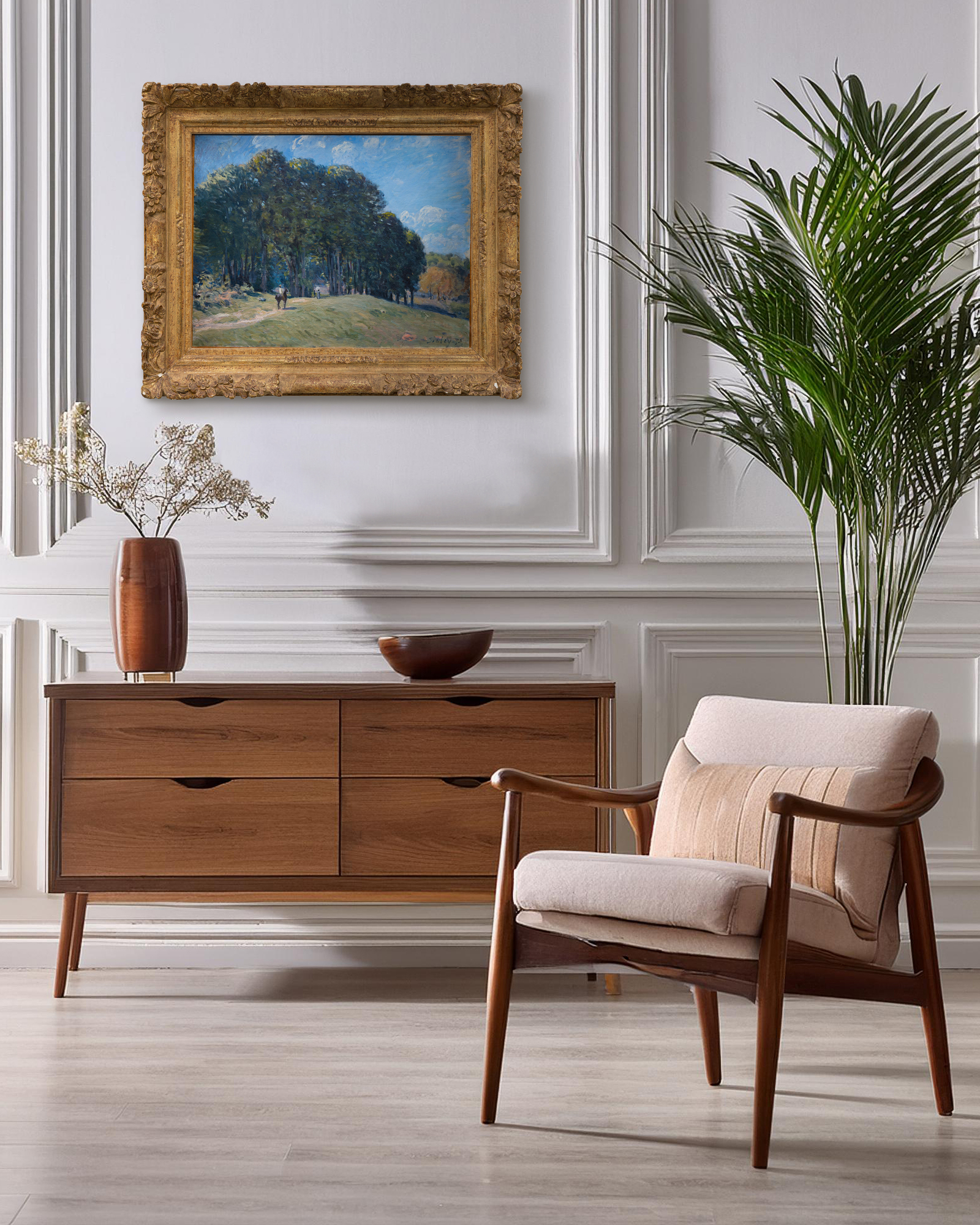
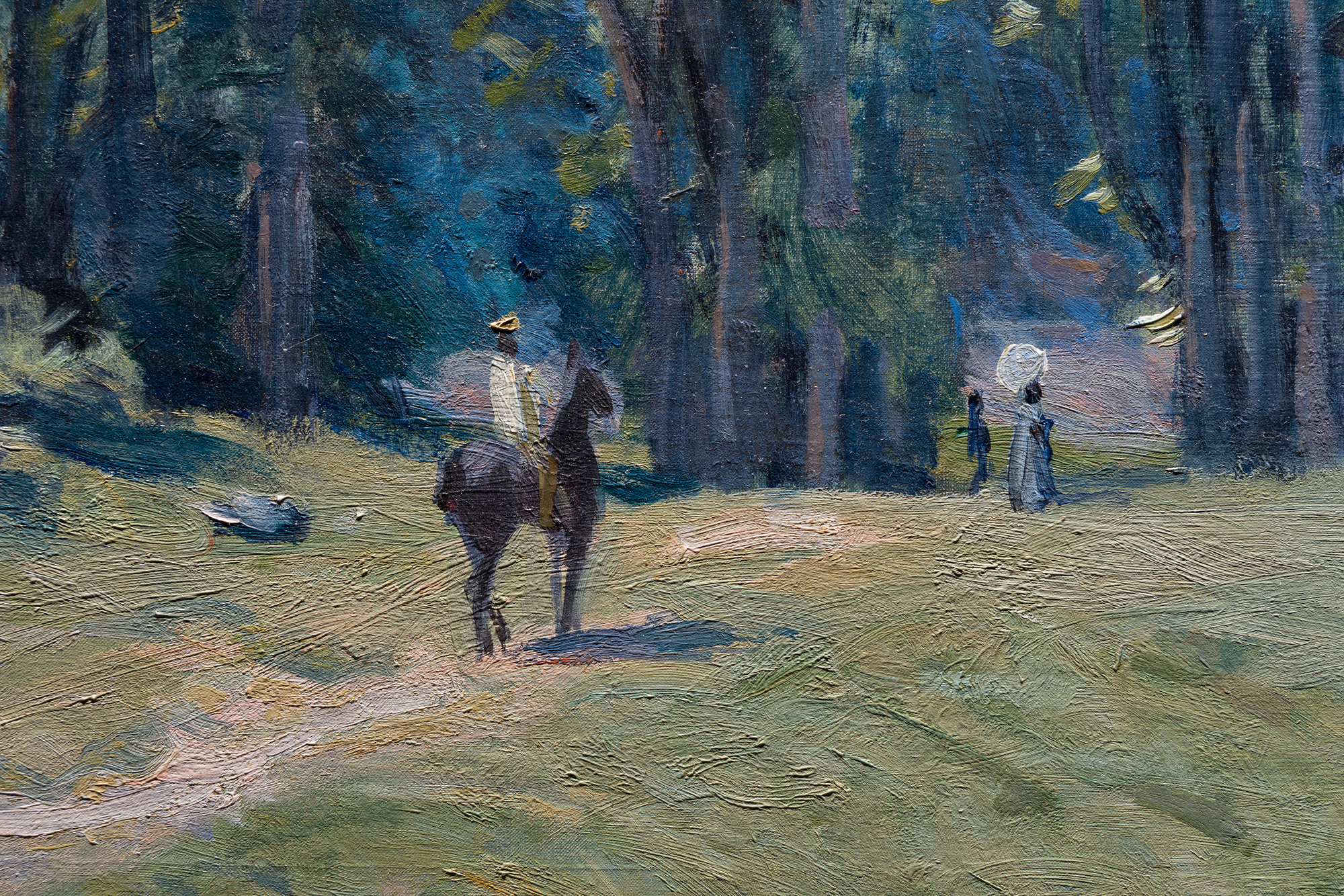
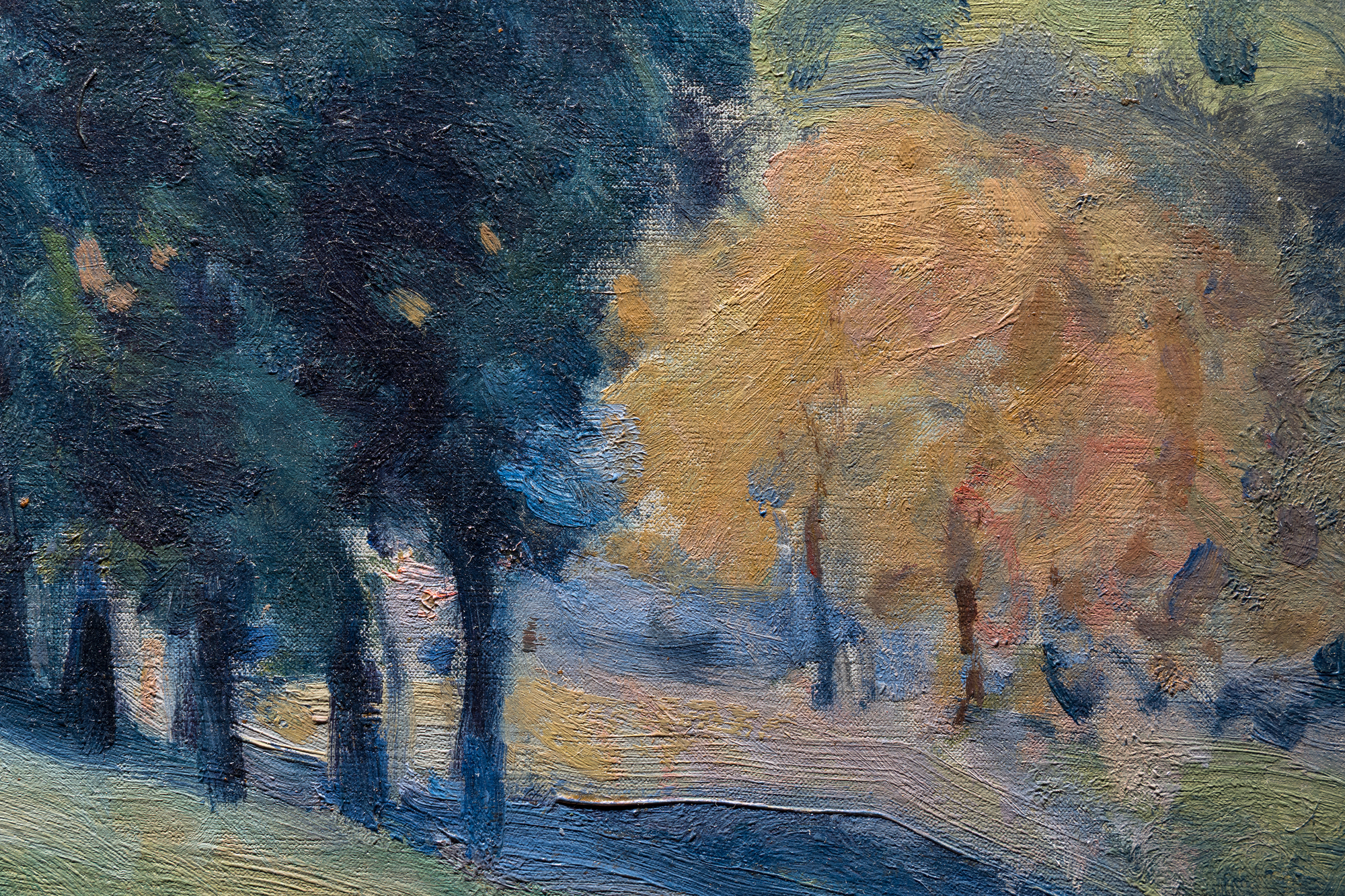
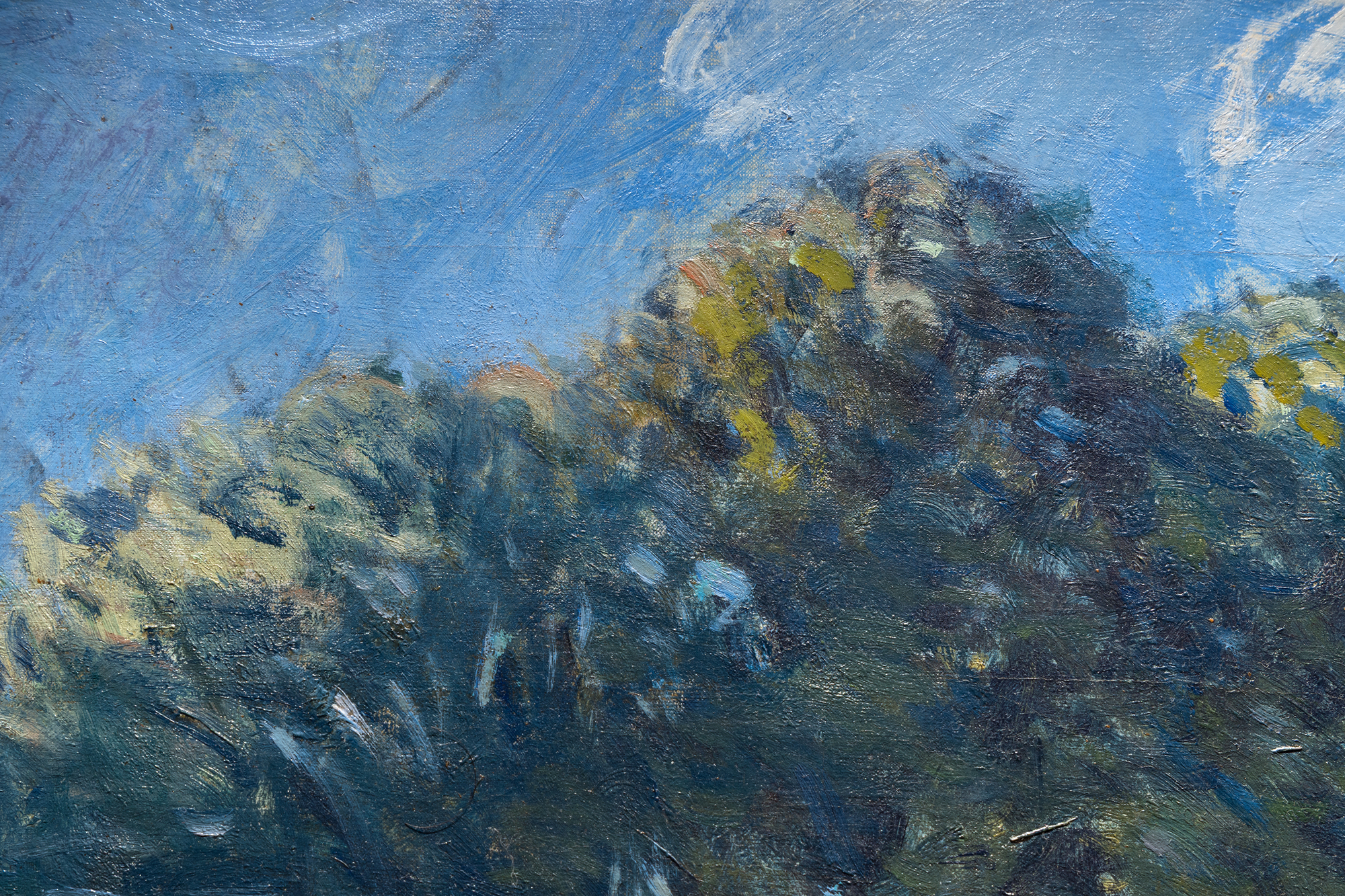
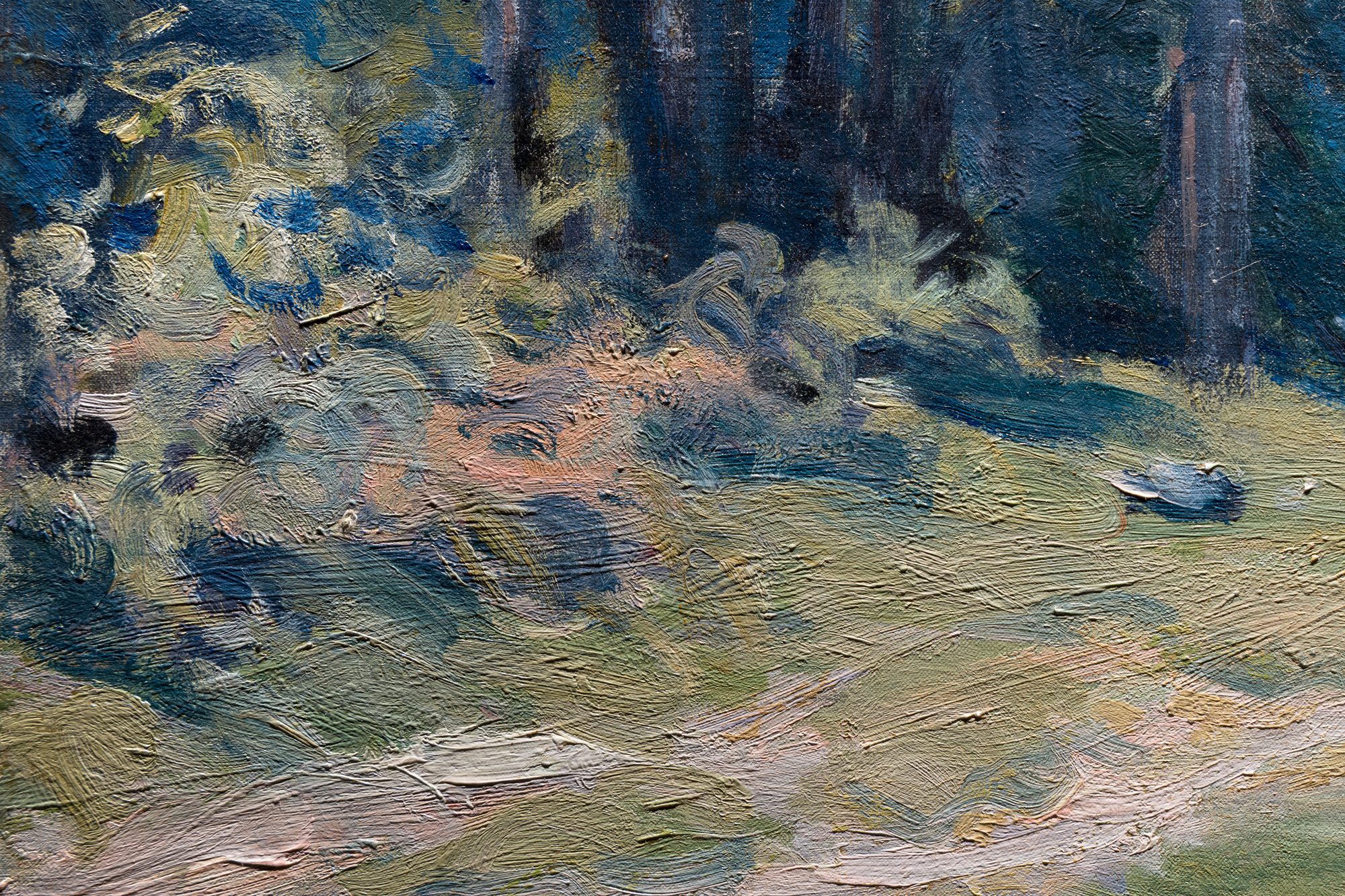
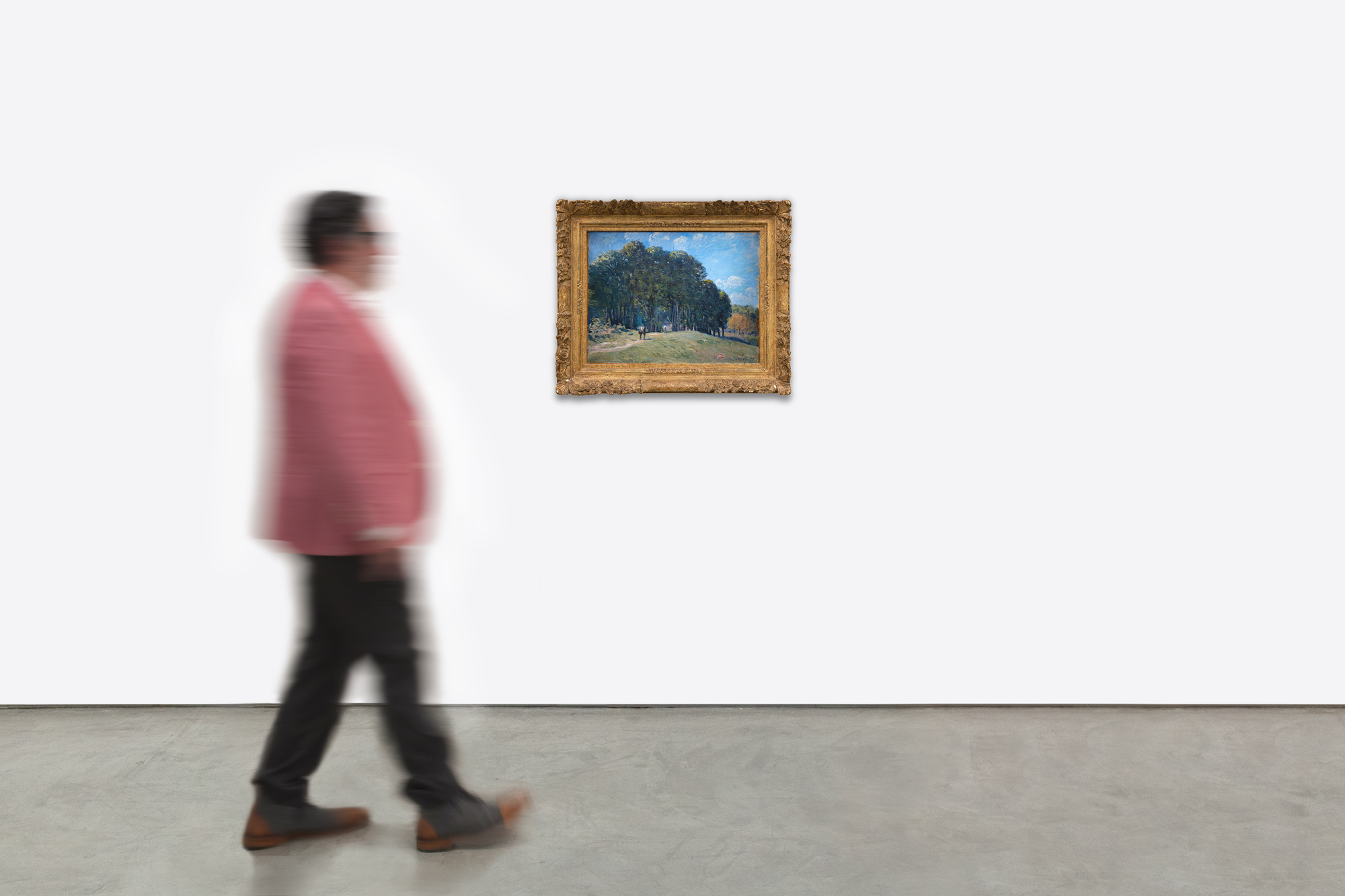
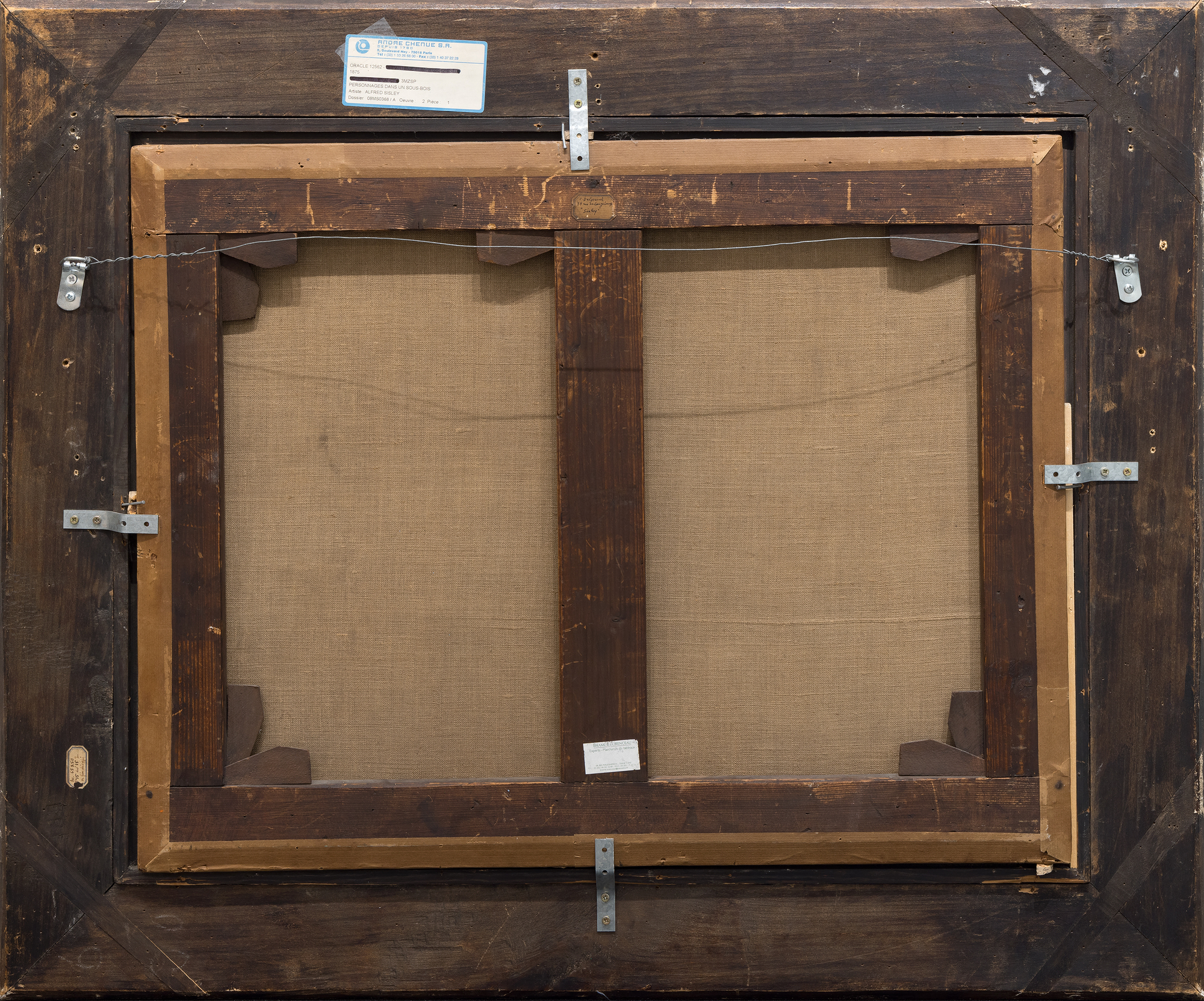
Provenance
Dubourg, ParisHôtel Drouot, Paris, 24 novembre 1903, n° 27
Jacques Balsan, Paris
Collection privée, France, années 1950
Collection privée, en descendant du haut
Collection privée, Floride
Littérature
Sylvie Brame & François Lorenceau, Alfred Sisley - Catalogue raisonné des peintures et des pastels, Paris, 2021, no. 196, pg. 104Prix1,900,000
L'installation de Sisley à Marly-le-Roi, motivée par l'amour de la verdure et la nécessité de subvenir aux besoins de sa jeune famille dans un contexte financier difficile après la guerre franco-prussienne, a façonné cette œuvre. Peinte après les ventes décevantes de l'exposition impressionniste de 1874, elle reflète la résilience. La lumière diffuse et la composition géométrique - chemin et arbres ancrant un vaste ciel - évoquent la douce brume de la région. Camille Pissarro, un proche collaborateur, salua Sisley comme "un grand et bel artiste, à mon avis un maître égal aux plus grands" (Pissarro, cité dans C. Lloyd, 'Alfred Sisley and the Purity of Vision', pp. 5-33, M. Stevens (ed.), Alfred Sisley, cat. exh., New Haven et Londres, 1992, p. 8). Le catalogue 2021 de Brame et Lorenceau indique que 360 des 1 013 peintures à l'huile de Sisley se trouvent dans des musées, ce qui confirme son héritage.
Cette œuvre concise mais évocatrice offre aux collectionneurs un rare aperçu de la maîtrise de Sisley, mêlant la beauté de la nature à l'innovation impressionniste.


